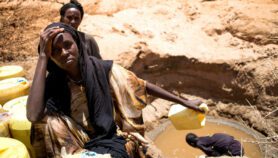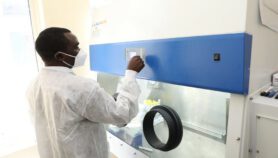By: Debbie Ponchner
Send to a friend
The details you provide on this page will not be used to send unsolicited email, and will not be sold to a 3rd party. See privacy policy.
[SAN JOSE] Scientists from Costa Rica and Panama, in collaboration with NASA, launched a month-long airborne mission this month (17 July) to understand the role that tropical clouds and storms play in climate change.
Scientists will use the new data to create more accurate models of climate change to enable governments to make informed policy decisions.
More than 200 scientists, including over 30 scientists and students from the University of Costa Rica, Costa Rica’s National University and the National Institute of Meteorology are involved in the project, based out of San Jose, Costa Rica.
NASA has invested US$20 million in the Tropical Composition, Cloud and Climate Coupling (TC4) project, and Costa Rica’s National Centre for High Technology, in San Jose, and the University of Panama, in Las Tablas, are also partners.
"Good science starts with good measurements," says Paul Newman, mission scientist and atmospheric physicist at NASA’s Goddard Space Flight Center.
Using medium- and high-altitude aircraft to collect data, the mission will study the lowest layer of the atmosphere — the troposphere, between 0–15 kilometres above the earth’s surface — and the tropopause, the layer between the troposphere and the upper atmosphere (stratosphere), above the tropical eastern Pacific ocean.
One of the main objectives of the project is to analyse how cirrus clouds — thin, transparent layers of water vapour that lie in the upper parts of the atmosphere, especially in the Tropics — retain heat that the ground radiates back into space, Newman told SciDev.Net.
Cirrus clouds form a ‘blanket’ over the globe, but the extent of their insulating effect is unknown. "Since we don’t understand it, none of the models that simulate climate change take this into account," says Newman.
Aircraft will fly up to 15,000 metres and measure the temperature of clouds, and collect data on ice particle formation, wind velocity and cloud structure to help scientists determine how these clouds are formed and how long they last.
The mission will also look at the role that rapidly forming, dynamic storms play in climate patterns.
More than 30 scientists will fly into the heart of these storms to measure temperature, humidity, precipitation, wind velocity and gas concentrations that will help them understand storms’ internal activity.
A Costa Rican ground team will play a crucial forecasting role, using balloon probes and computer simulations to predict where the storms and clouds will form.
Other scientists in the group are using the data collected by the planes to calibrate and validate the data of a series of satellites that study our atmosphere.













